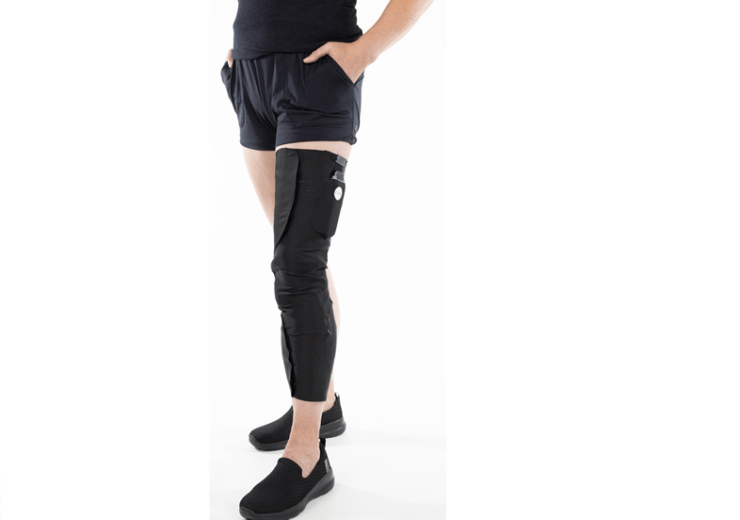Neural Sleeve is an algorithm-powered bionic, leg-worn, lightweight garment designed to help people with mobility issues

Lightweight and leg-worn Cionic Neural Sleeve is intended to help people with mobility issues. Credit: Business Wire.
Cionic has received FDA approval for its lightweight, leg-worn Neural Sleeve, which has been designed to help people with mobility issues due to multiple sclerosis (MS), stroke, cerebral palsy (CP), and other neurological conditions.
The company will be able to market its Neural Sleeve, which has been given approval for its ‘functional electrical stimulation to assist in gait for people with foot drop and leg muscle weakness’.
Claiming to bring together movement analysis as well as augmentation into a wearable garment, Neural Sleeve is durable and can help people walk, which is a basic important activity to independent living.
Cionic founder, CEO Jeremiah Robison said: “We are incredibly excited for the Cionic Neural Sleeve to be an FDA cleared Class II medical device and are ready to start impacting the lives of individuals with movement challenges in meaningful ways.
“Our mission is to become the new standard of care by addressing the underlying brain body connections, enabling confident movement, and greater engagement in the community.”
Following the completion of human factors and efficacy testing of this algorithm-powered bionic garment, the company had applied for FDA approval last November.
Robinson said: “This would not have been possible without the more than 70 individuals across multiple sclerosis, stroke, cerebral palsy, and spinal cord injury who participated in our trials.
“Together with our research partners at Cleveland State University, we were able to demonstrate statistically significant improvement to foot clearance, leading to more stable and confident walking.”
Leveraging advanced algorithms, Neural Sleeve reads the signal sent from the brain to the muscles and then can predict a person’s movement in just 1/10th of a second before the foot lifts off the ground.
It makes use of sensors to evaluate how the body is positioned and how muscles fire during movement.
The system then predicts the movement by measuring the electrical signal sent from the brain, following which algorithms evaluate this data in real-time for determining the muscle activation patterns.
It delivers functional electrical stimulation to sequence muscle firing to help natural movement.
It serves as an adaptive system that offers real-time augmentation and adjustment of a person’s movement. This in turn offers required help based on what gets measured of the neurological feedback that adjusts stimulation based on measured gait kinematics for performance optimisation.
The company was set up by Robison in 2019, who drew motivation from his daughter’s mobility journey following her CP diagnosis.
